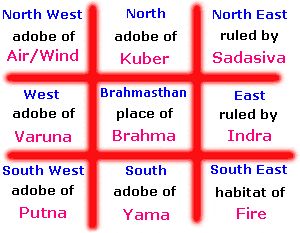Introduction
In the world of interior design and architecture, two ancient philosophies have gained prominence for their supposed ability to enhance the flow of energy and harmony within a living space. Vastu Shastra, originating in India, and Feng Shui, originating in China, both offer guidelines for the arrangement and design of spaces to promote well-being. In this blog, we will compare and contrast Vastu Shastra and Feng Shui principles, highlighting their similarities and differences.
Vastu Shastra: The Science of Architecture
Vastu Shastra, which translates to “science of architecture” in Sanskrit, is an ancient Indian tradition dating back thousands of years. It prescribes a set of guidelines for the construction and design of buildings, both residential and commercial, to ensure the occupants’ physical and mental well-being.
Key Principles of Vastu Shastra:
Directional Alignment: Vastu places a strong emphasis on the cardinal directions, with each direction associated with specific elements and deities. For example, the northeast is associated with water and the deity Varuna, while the southeast is associated with fire and Agni.
Five Elements: Vastu follows the Panchabhoota system, which recognizes five elements – Earth, Water, Fire, Air, and Space. Proper balance and placement of these elements within a structure are crucial for harmony and positive energy.
Mandala Layout: Vastu often employs a mandala, a geometric design representing the universe, to guide the layout of spaces within a building.
Feng Shui: The Art of Placement
Feng Shui, on the other hand, is a Chinese system of aesthetics that has been practiced for over 3,000 years. It emphasizes the harmonious arrangement of spaces to maximize the flow of qi, or vital energy, and promote health, wealth, and happiness.
Key Principles of Feng Shui:
Bagua Map: Feng Shui employs the Bagua map, a grid that divides a space into nine areas, each associated with specific life aspects, such as career, family, and health. Proper alignment of these areas is essential for enhancing those aspects of one’s life.
Yin and Yang: Feng Shui encourages balancing the opposing forces of yin (passive, dark, feminine) and yang (active, light, masculine) to achieve equilibrium.
Five Elements: Similar to Vastu Shastra, Feng Shui also recognizes the five elements (wood, fire, earth, metal, and water) and their interactions within a space.
Similarities and Differences
While both Vastu Shastra and Feng Shui aim to create harmonious and positive living environments, they have several similarities and differences:
Similarities:
Common Principles in Vastu Shastra and Feng Shui:
Energy Flow: Both Vastu Shastra and Feng Shui underscore the significance of energy flow within a space. Vastu refers to this vital energy as “Prana,” while Feng Shui terms it “qi.”
Five Elements: Both systems incorporate the concept of the five elements – earth, water, fire, air, and space – to establish equilibrium and harmony in a given environment, though they may assign different attributes to these elements.
Balance of Opposing Forces: Both Vastu and Feng Shui advocate the harmonious coexistence of opposing forces or energies, whether it’s balancing the elements or achieving equilibrium between yin and yang.
Use of Compass Directions: Both traditions utilize compass directions to determine the orientation of buildings or spaces. Vastu Shastra focuses on the cardinal directions, while Feng Shui takes into account the eight compass directions.
Decluttering for Energy Flow: Both Vastu Shastra and Feng Shui stress the importance of decluttering a space, recognizing that a clutter-free environment is essential for facilitating better energy flow.
These common principles demonstrate the shared objective of creating balanced and energetically positive living spaces within the distinct frameworks of Vastu Shastra and Feng Shui.
Differences:
Cultural and Regional Variations: Vastu Shastra has its deep roots in Indian culture and philosophy, whereas Feng Shui is firmly grounded in Chinese culture. Consequently, their symbolism, deities, and directional associations can exhibit substantial differences.
Layout and Orientation: Vastu Shastra places a strong emphasis on cardinal directions and the arrangement of rooms, whereas Feng Shui concentrates on the Bagua map and the strategic placement of furniture and objects within a space.
Application: Vastu Shastra finds greater prevalence in the Indian subcontinent, while Feng Shui has garnered popularity not only in East Asia but also across the globe.
Origin: Vastu Shastra originated in India over 6,000 years ago, whereas Feng Shui traces its roots back to China more than 3,000 years ago.
Philosophy: While both systems share the common goal of establishing harmony within a space, they diverge in their underlying philosophies. Vastu Shastra is grounded in the concept that everything in the universe is interconnected, and homes should align with this interconnectedness. In contrast, Feng Shui is built on the idea that the universe is composed of energy, known as “chi,” and homes should be designed to facilitate the unobstructed flow of this energy.
Layout: The layout of spaces in Vastu Shastra follows a grid system called the “vastu purusha mandala,” whereas Feng Shui employs the “bagua” map as its basis for spatial organization.
Conclusion
In the pursuit of creating harmonious and energetically balanced living spaces, both Vastu Shastra and Feng Shui offer valuable insights. Their underlying principles of energy flow, element balance, and the importance of direction are areas where they align. However, the cultural and regional differences in symbolism, layout, and application make them distinct approaches to achieving the same goal. Ultimately, the choice between Vastu and Feng Shui may depend on one’s cultural background, personal beliefs, and specific goals for their living environment.




